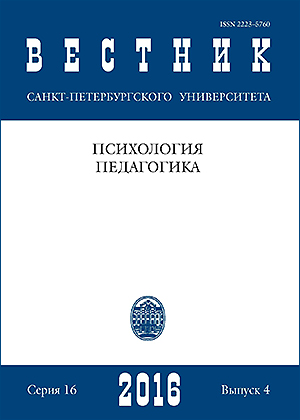Contrast Illusion: Old Facts in a New Light
DOI:
https://doi.org/10.21638/11701/spbu16.2016.405Abstract
Th e article deals with the eff ect of contrast illusion. Th is experimental fact was discovered by N. N. Uznadze, but it has not yet received proper explanation. We review classical experiments by N. N. Uznadze, where a set display was established under conditions in which conscious control is assumed. Th e procedure and the results of the experiment that tests the possibility of contrast illusion under conditions of forming a fi xed set on irrelevant stimulus (out of the attention focus) are described. Participants perceived geometrical fi gures on a screen divided into two windows. In the lefwindow there were always 20% fewer points than in the right window. Th e task for the participant was to determine in which window the presented geometrical fi gure was displayed higher in the frame. Under control conditions participants compared an equal number of points in each window. In most cases (84%) the participants were wrong. Contrast illusions were dominant (58 % of all cases). Th e proposed explanation of the contrast illusion eff ect presumes two stages of unconscious processes that precede the eff ect of the illusion, namely, the stage of parallel collation and the stage of comparison of the results of that collation.
Keywords:
fixed set, contrast illusion, assimilative illusion, conscious control, collation
Downloads
References
References
Allakhverdov V. M. Soznanie kak paradoks (Eksperimental’naia psikhologika, t. 1) [Consciousness as Paradox (Experimental Psychologics. Vol. 1) ]. St. Petersburg, DNK publishing, 2000. 528 p. (In Russian)
Downloads
Published
How to Cite
Issue
Section
License
Articles of "Vestnik of Saint Petersburg University. Psychology" are open access distributed under the terms of the License Agreement with Saint Petersburg State University, which permits to the authors unrestricted distribution and self-archiving free of charge.




